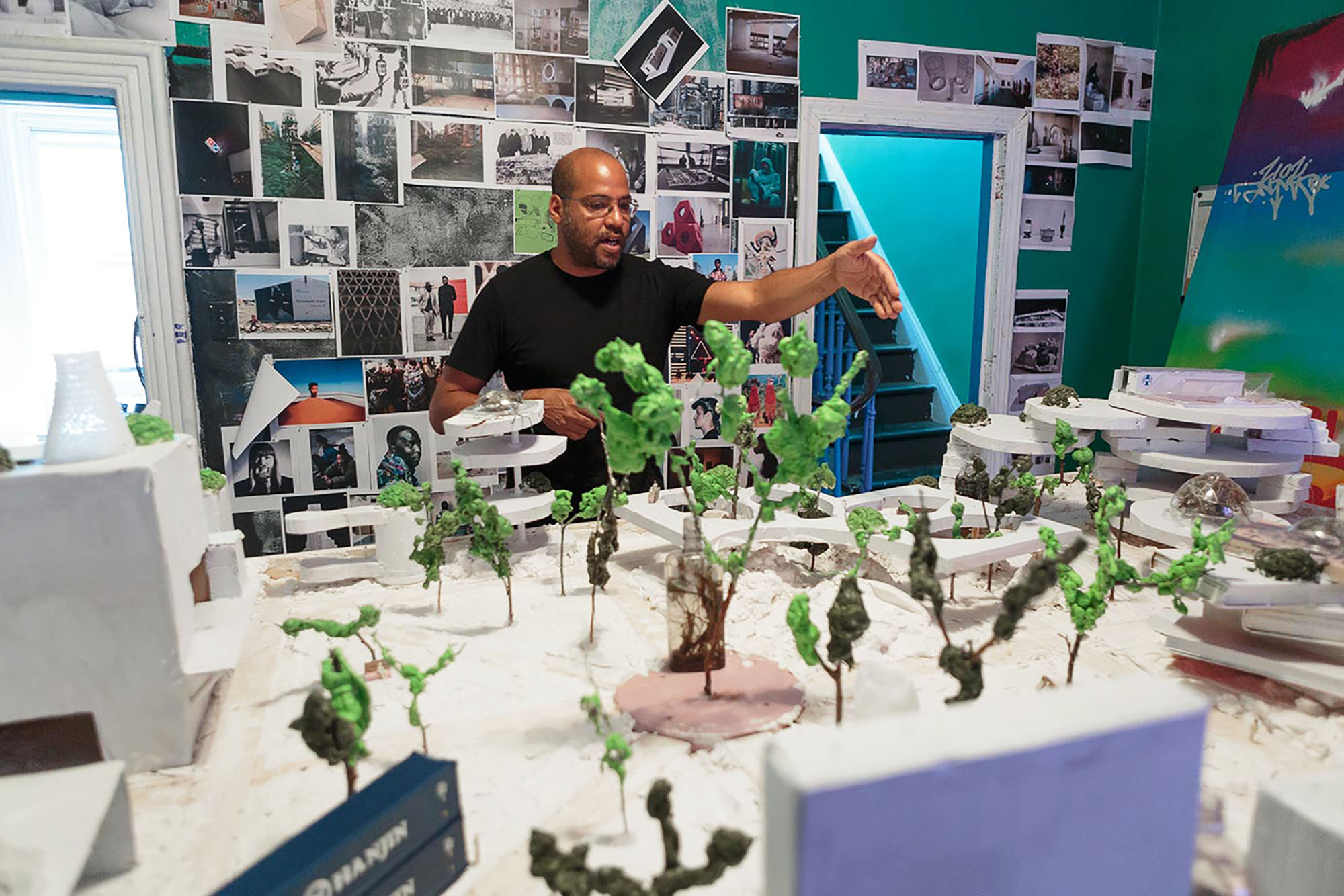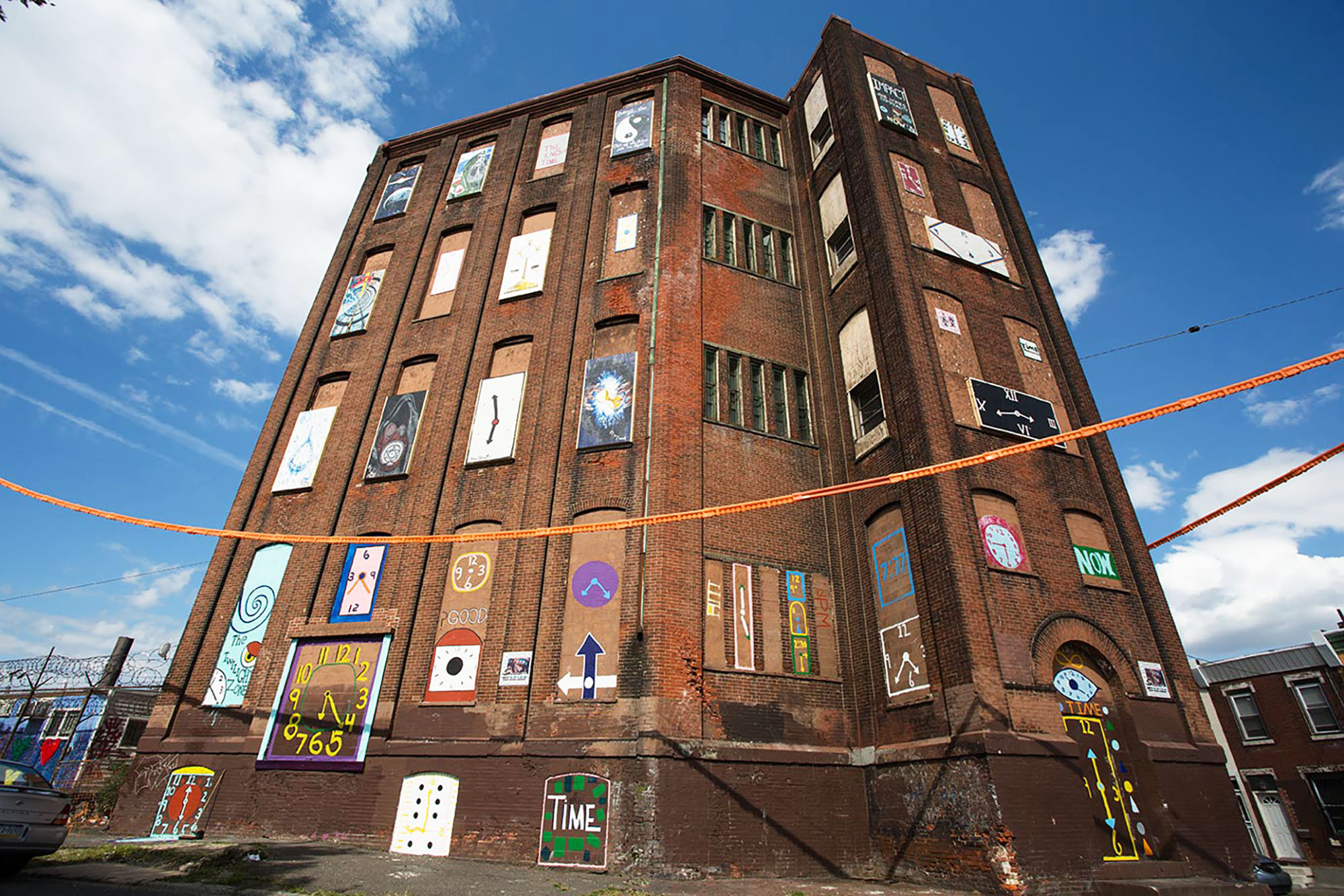
From founding fathers who gave birth to this country, but owned enslaved Africans and supported slavery, to Confederate generals who fought to uphold slavery and destroy the perpetual union, a debate is raging in America over how public monuments memorialize or misrepresent the nation’s history, and if they should stand or fall.
Now, as part of Monument Lab, a Philadelphia public art and history project, three PennDesign Fine Arts professors—David Hartt, Sharon Hayes, and Shira Walinsky—are joining artists and residents to answer the question, “What makes a monument in the 21st century?”
The question also inspired “Monument Lab: Public Art & Civic Research Praxis,” a PennDesign Fine Arts community-based research course.
Temporary Monument Lab art installations unveiled Sept. 16 are on display through Sunday, Nov. 19, in five public squares: City Hall (once known as Center Square); Franklin Square; Washington Square; Logan Circle (originally Logan Square); and Rittenhouse Square, and in five neighborhood parks: Penn Treaty, Vernon, Norris Square, Malcolm X, and Marconi Plaza.
Produced with Mural Arts Philadelphia, Ken Lum, chair of the Fine Arts Department at PennDesign, and Paul Farber, managing director of the Penn Program in Environmental Humanities, led the curatorial team. Farber also teaches the course at Penn associated with the project.
As part of the class, students serve as trained art guides at Monument Lab sites. They collect proposals for future monuments from visitors, who are encouraged to fill out proposal forms to name, describe, or sketch their ideas for monuments, and indicate where they imagine their monuments could be placed in the city. Students and other Lab team members scan the forms into a data system for fast uploading to the Monument Lab website.
A central exhibition hub at the Pennsylvania Academy of the Fine Arts has a screen displaying the website. The datasets are managed by Penn’s Price Lab for Digital Humanities and the Penn Libraries. A final public report will be compiled after Monument Lab ends.
Lum was on hand at several sites when the temporary monuments were installed. He says he sensed that many Philadelphians were grateful that they were being “met by a listening ear.”
“A lot of people stopped to ask what was going on, and then they would offer their opinions about art, politics, and their thoughts about ways to improve Philadelphia,” he says.
The PennDesign faculty members participating in the project address myriad topics of engagement of public space, equality and social justice, refugee and immigrant issues, and neighborhood concerns.
Kristen Goldschmidt, coordinator of PennDesign’s Undergraduate Fine Arts Program, served as project manager for Hank Willis Thomas’ All Power to All People sculpture on Thomas Paine Plaza across from City Hall, near the controversial statue of former Philadelphia Mayor Frank Rizzo.
Thomas says his eight-foot-tall, nearly 800-pound installation of an enlarged Afro pick with a black power fist was created “to highlight ideas related to community, strength, perseverance, comradeship, and resistance to oppression.”
In partnership with youth from the Norris Square Neighborhood Project’s Semillas del Futuro summer program, the Monument Art project helmed by Hartt asks the questions, “Who participates in the process of making a city and a neighborhood, and how can we imagine a more inclusive future? They created a film being screened in Norris Square, for everyone a garden VIII, which memorializes their shared future vision of the square as a forested cityscape.
Hayes’ Monument Lab project “If They Should Ask” calls attention to the fact that only two of Philadelphia’s hundreds of statues memorialize women. She convened a group of intergenerational, intersectional, civically engaged women to discuss “the persistent and aggressive exclusion of women from this form of public recognition.”
Her artwork, installed in Rittenhouse Square, is a collection of cast concrete pedestals sourced from existing monuments in the city scaled to half-size and encircled with the names of women who contributed to civic and public life in the city throughout its history.
For her monument, Free Speech, an interactive news kiosk in Marconi Plaza next to SEPTA’s Oregon Station, Walinsky collaborated with artists in the Mural Arts’ Southeast by Southeast program. The kiosk showcases the stories of Bhutanese, Burmese, Nepalese, and other immigrant and refugee communities in Philadelphia. Passersby can take free postcards, maps, books, oral histories, and recipe cards.
Lum says that the public reception to Monument Lab has thus far been gratifying and at times surprising.
“That’s just to say that the body politic is complex and varied, and expectations do not always align to what we may think of as this type or that type of person,” he says.
On Wednesday, Oct. 11, Lum will moderate “Monumental Exchange,” a discussion with artists Mel Chin and Tyree Guyton. The event will take place from 6 to 8 p.m. at the University of the Arts.
This article originally appeared in the Sept. 28, 2017 edition of the Penn Current Express.










